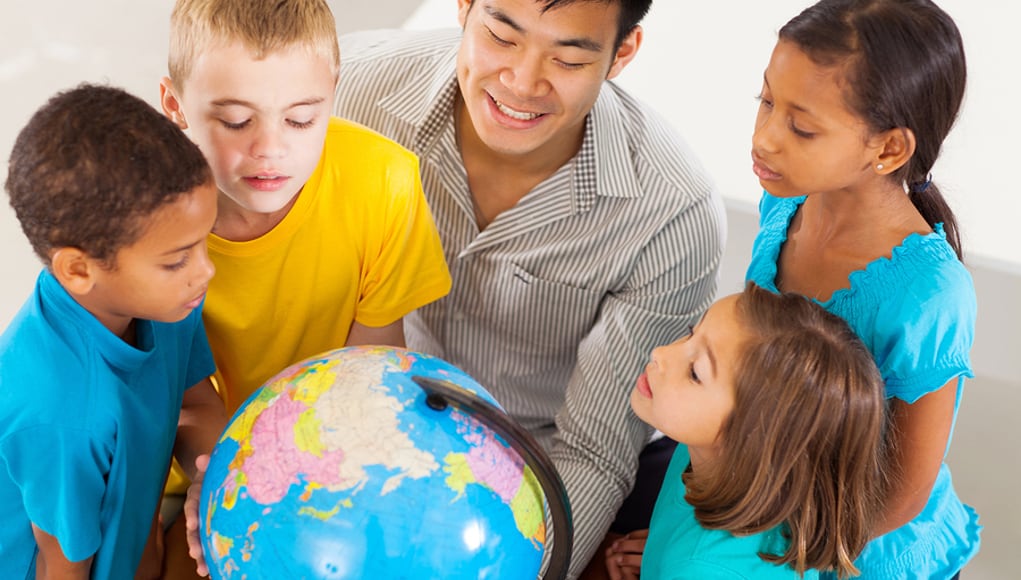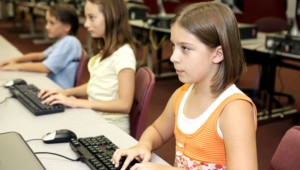Designing Student Projects for Global Readiness

By Andrew Miller
It’s time to widen the scope of what project-based learning (PBL) can really do. We’ve used PBL to engage our students. We’ve used PBL to help students learn important content and address learning standards. We’ve used PBL to address 21st-century skills such as collaboration, critical thinking and communication. We’ve even used PBL to focus on professional practice and reflection.
These are all important goals and foci, but we need to continue to think and reflect on the power of PBL and how it can do even more for our students and for ourselves. The publication “Preparing Students for a Project-Based World” emphasizes that PBL is preparation for the world beyond the classroom, including issues of equity and the global economy.
What sticks out to me is one important word: world. If it’s a Project-Based World, shouldn’t we use PBL to continue to engage with the world beyond the boundaries of countries and cultures?
I think we need to take the attitude and mindset expressed by Sébastien Turbot who ran projects at the Paris School of International Affairs:
How powerful is it when students are doing what is shared above? Teachers are already engaging students in projects such as these, and we should continue to do them to address global competencies.
What is Global Readiness?
 When students are global ready, they are able to meet specific competencies that allow them to be successful in the world around them. However, global readiness is more than simply being able to collaborate or communicate.
When students are global ready, they are able to meet specific competencies that allow them to be successful in the world around them. However, global readiness is more than simply being able to collaborate or communicate.
Instead, these skills are connected to important nuances of cultures, perspectives and equity. It isn’t just that students can collaborate with another person, but that they can partner and work within a global community and take action.
Students develop empathy and global sensibilities, as well as connect with people of different cultures and communities across our world. Global readiness really facilitates a complex mindshift from “me” to “us.”
Asia Society has Global Competency Outcomes and Rubrics to support teachers in creating and/or selecting goals to have students work on. These might include students “listening to and communicating effectively with diverse people,” “explaining the impact of cultural interactions” or “identifying and creating opportunities for personal and collaborative action to improve conditions.”
The Partnership for 21st Century Skills also has K-12 Indicators for Global Readiness that focus on the themes of Understanding, Investigating, Connecting and Integrating. Educators and schools should consider how to embed these indicators into the curriculum as students learn content.
It’s not about working on all the skills, it’s about the intentionality of what skills, when to address them and how to foster and assess them. All students of all grade levels can and should work toward global readiness.
PBL Can Change the World
 Consider this project in process from math teacher Ginger Habel at the Shanghai American School. Students were challenged to design a playground for an actual school in Nairobi, Kenya.
Consider this project in process from math teacher Ginger Habel at the Shanghai American School. Students were challenged to design a playground for an actual school in Nairobi, Kenya.
Students had to learn scale, measurement and other various math skills to effectively complete the task. They also had to work around challenges that the school faced including flooding and that part of the school is also located on a hill.
Students selected supplies that were easily available for students to purchase there, and made sure the design was solid and had a feasible budget. Students shared their design with their classes and with the school in Nairobi as well.
Some students also created an Exploratory (a student-run learning time) to help raise money needed for the project. Not only were students impacting other students and communities, but they were examining various perspectives and cultures, as well as collaborating and communicating effectively to address an authentic task. Although the first iteration of this project occurred last year, Ginger hopes to continue to work on this project with her students this year as well.
 PBL is the “how” for addressing global readiness. Global readiness calls for students to partner across the globe to solve problems in authentic ways. PBL requires authenticity, whether that’s investigating authentic problems, using authentic tools or meeting an authentic need.
PBL is the “how” for addressing global readiness. Global readiness calls for students to partner across the globe to solve problems in authentic ways. PBL requires authenticity, whether that’s investigating authentic problems, using authentic tools or meeting an authentic need.
PBL also facilitates technology integration, and global readiness calls for students to use technology to learn different perspectives and select media to communicate with diverse audiences. Students must learn content to address global competencies just as PBL projects are clearly aligned to content standards and outcomes.
As you begin to unpack the various global readiness indicators, you see a clear tie to the essential elements of PBL. Not only is there clear alignment, but by focusing global readiness on the “what” and the “how” of PBL, we can bring the world into the classroom and bring students out to the world.
In addition to using PBL for student engagement, we can create projects that are not only meaningful to students but have the potential to change the world.
This blog is part of “It’s a Project-Based World” series. To learn more about this series and to learn ways that you can contribute, click the icon below to go to the Project-Based World page.
Join in the conversation at #projectbased
For more see:
- The 5 Pillars of Whole School Transformation
- Why Global Should Be the Education Movement of 2017
- It’s a Project-Based World: A Thought Leadership Campaign
Andrew Miller is an Instructional Coach at Shanghai American School and is a faculty member for ASCD and the Buck Institute for Education. Follow him on Twitter: @betamiller
Stay in-the-know with all things EdTech and innovations in learning by signing up to receive the weekly Smart Update. This post includes mentions of a Getting Smart partner. For a full list of partners, affiliate organizations and all other disclosures please see our Partner page.








0 Comments
Leave a Comment
Your email address will not be published. All fields are required.